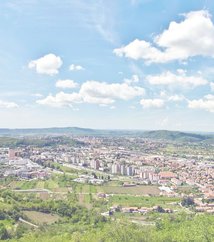Gorizia-Nova Gorica
Overview
Historical and geographical context
The Gorizia/Nova Gorica conurbation is situated at the cross-roads between several linguistic and cultural influences: Germanic, Slav and Italian. The town of Gorizia (Görz in German) formed part of the Austro-Hungarian Empire until 1918. After the First World War, the town became Italian and took the name of Gorizia. After 1945, Gorizia was claimed by Yugoslavia, which obrained the relatively small eastern part of the town, which included the train station. This part of the town then took the name of “Nova Goriza”. Its development adopted a “socialist architecture”. This was accompanied by the arrival of a population that did not originate in the region, and spoke neither Italian nor the local dialect.
During the liberalisation of the Yugoslav regime, inhabitants from all over the Federation came to do their shopping in Gorizia, benefiting from one of the most open crossing points of the Iron Curtain.
After the collapse of Yugoslavia and Slovenia’s declaration of independence in 1991, cross-border flows changed direction, with many Italians crossing the border into Slovenia to make purchases at lower cost. Nova Gorica became home to casinos and gambling, which have a limited presence in Italy.
Slovenia’s entry into the European Union in 2004, then into the Schengen Area in 2007 has enabled Gorizia/Nova Gorica to establish itself as a cross-border conurbation.


